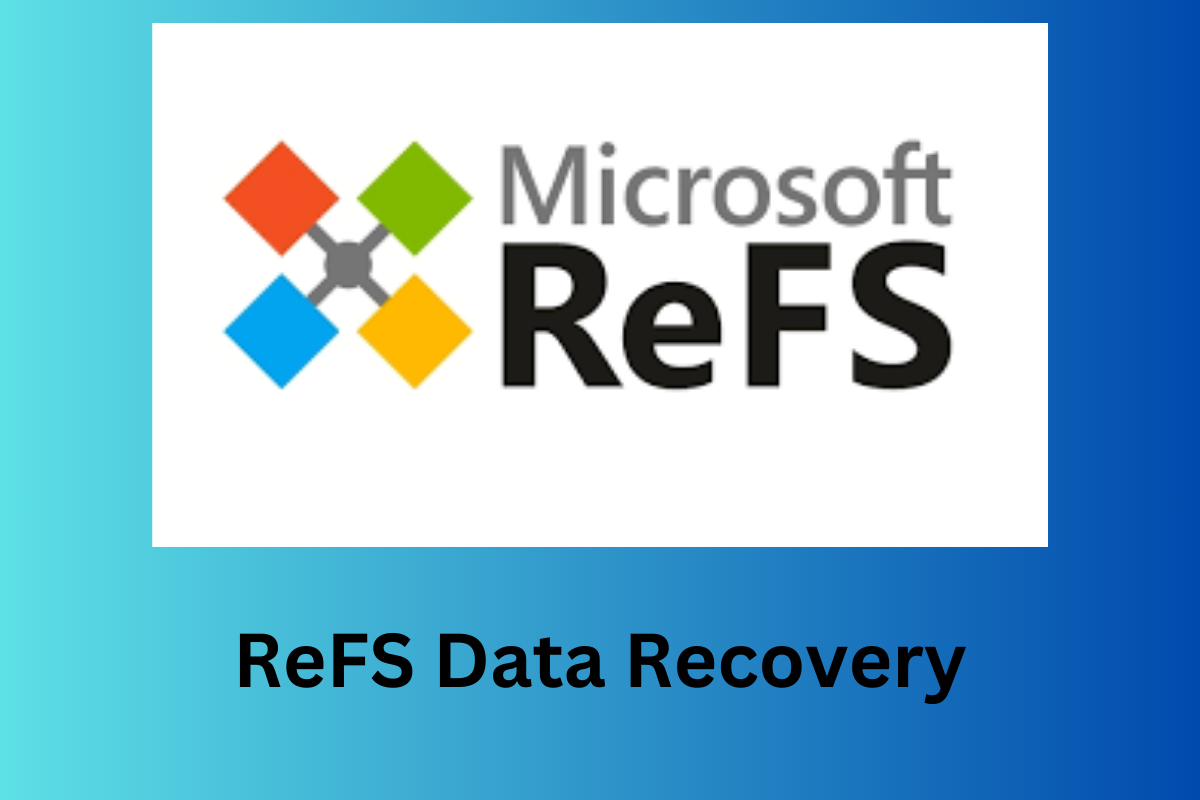Since Microsoft announced that Windows 11 will support the ReFS file system, interest in the system has increased. For instance, many advanced users decide to install Windows 11 on a ReFS partition to test how ReFS performs on Windows 11.
However, with the rise of using the ReFS file system on a Windows computer, data loss problems started to appear more frequently. It brings concerns about ReFS data recovery and available data recovery software options.
Not to worry. We installed and ran the data recovery software on the market that advertises support for the ReFS file system on its product website. After evaluating the recovery results for deleted files and lost ReFS partitions, we have chosen the applications in this article to get you started.
ReFS Data Recovery Software Review Summary:
| 🔢Number of tested tools | 5 |
| ⏰Average recovery time | 1h 30 min |
| 🖥Device we tested on | Dell Inspiration 15 laptop |
| 👩💻Windows version we tested on | Windows 10 Pro 21H1 Version 19043 Build |
| 💰Average cost | $80 |
An overview of ReFS file system and ReFS data recovery
ReFS is a modern file system developed by Microsoft for use in Windows operating systems, starting with Windows Server 2012 and Windows 8.
ReFS is designed to be more resilient and robust compared to older file systems like NTFS. It includes features such as data integrity, automatic error correction, and enhanced data redundancy. However, like any file system, data loss can still occur due to various reasons, such as hardware failures, accidental deletion, corruption, or other unforeseen issues.
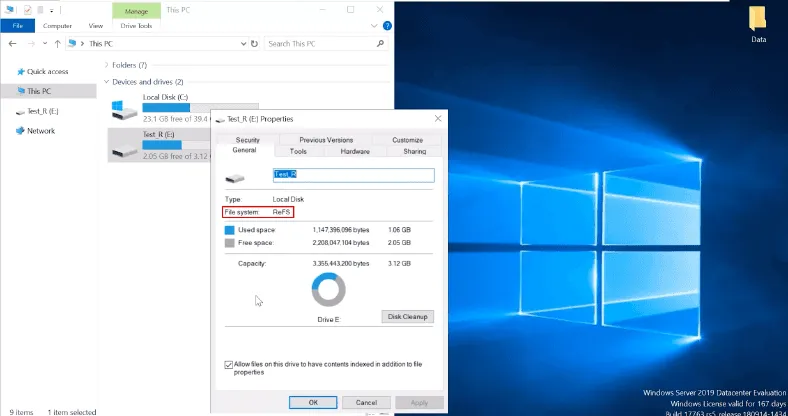
If you need to perform data recovery on a ReFS volume, you may need specialized software or services that are capable of handling this file system. Data recovery from ReFS volumes may be more challenging than from other file systems due to its unique features.
If the information in this article is useful, please share it with other people.
Introducing the best ReFS data recovery software
Compared with other common Windows file systems like NTFS, exFAT, and FAT, you have fewer choices of specialized software that supports data recovery from a file system using the ReFS (Resilient File System) technology. However, we believe that data recovery from Windows ReFS will be widely supported by more data recovery products over time, including iBoysoft Data Recovery for Windows.
Warning: To prevent further data overwrites or corruption, it's crucial to stop using the affected ReFS volume as soon as you realize data loss has occurred. If possible, make a backup of the affected ReFS volume before attempting any data recovery.
#1 ReclaiMe ReFS Recovery
ReclaiMe Data Recovery Software is a comprehensive data recovery solution that can deal with various data loss scenarios, including accidental deletion, formatting, RAW, and boot failure. It extends its recovery capabilities to NAS recovery and RAID recovery, which are not very common for DIY recovery software.
It is one of the first data recovery tools that support ReFS data recovery. It allows users to recover data from ReFS volumes, whether the files are deleted or you can't access a ReFS partition due to any errors.
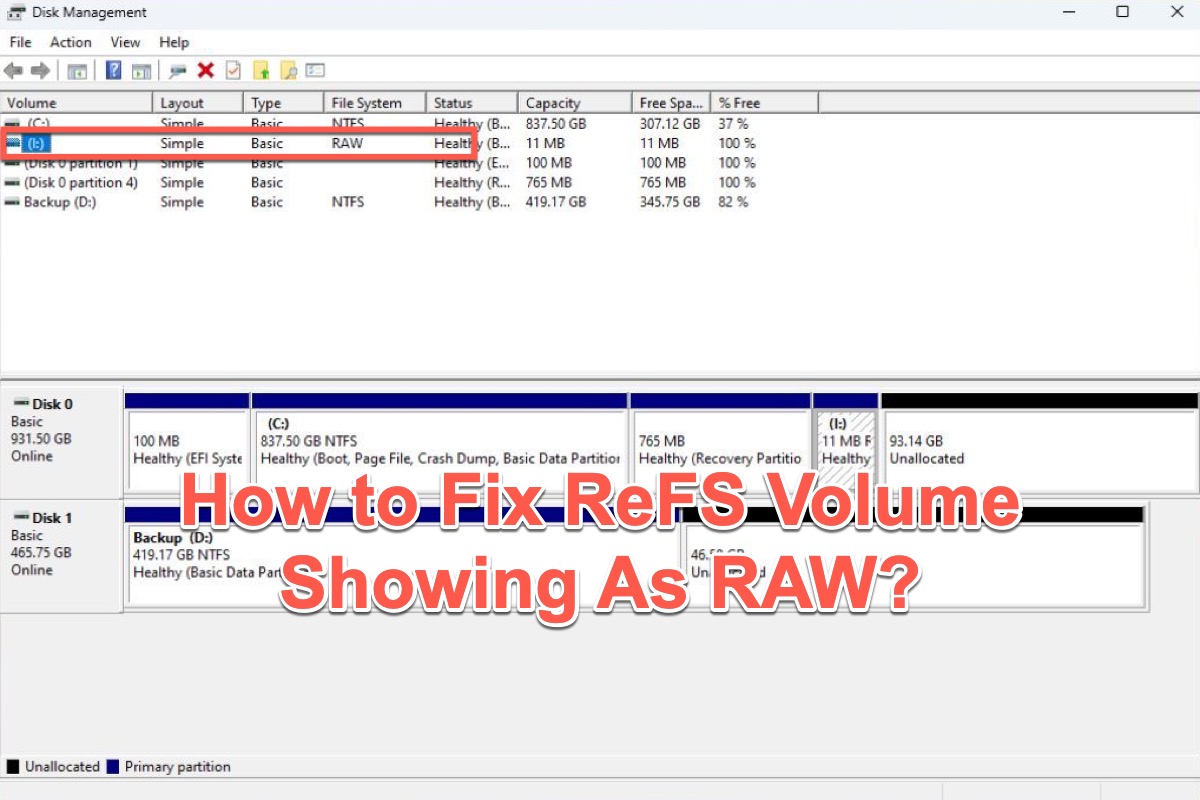
When you find the ReFS volume showing as RAW, you need to fix it immediately. This tutorial offers some methods to fix a RAW ReFS volume, including data recovery tips.
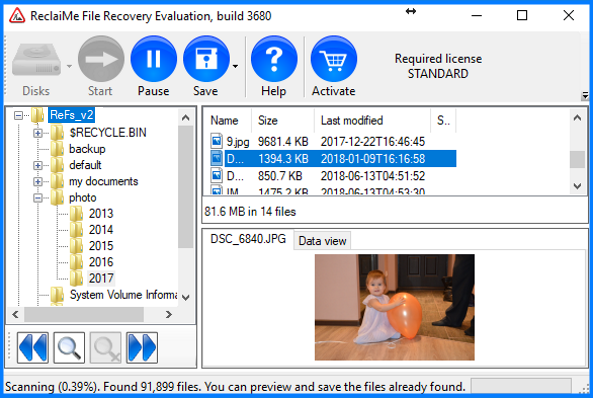
- Pros:
- Full support for Windows ReFS file system
- Satisfying scanning speed and recovery results
- Easy-to-use user interface for general users
- Free ReFS volume scanning and file preview
- Cons:
- No free ReFS data recovery is available - $ 89.95 for a Standard license key
#2 R-Studio For Windows
R-Studio is a disk recovery software and hard drive recovery tool. Its Windows version supports a wide range of Microsoft file systems, including ReFS. It offers advanced features for data recovery, such as damaged RAID recovery, Hex Editor, and formatted partition recovery. These features make it suitable for both basic and complex recovery tasks and are used by both beginners and users with a technical background.
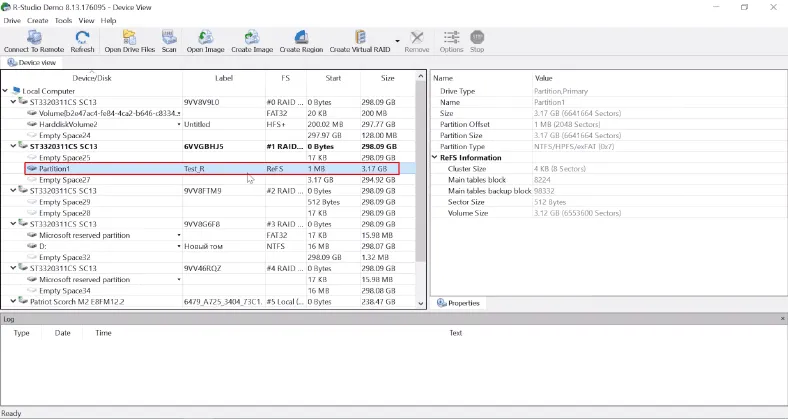
- Pros:
- Data recovery on deleted ReFS partitions
- Recover data from a ReFS drive when the partition structure was damaged
- Advanced recovery algorithms
- Estimation of chances for successful file recovery
- Cons:
- It costs $79.99 to recover your lost files from the ReFS
- Complex user interface for beginners
#3 UFS Explorer
Starting with version 8.14, all editions of UFS Explorer will include support for ReFS file recovery. It allows users to access the available files, recover deleted or formatted data, and reconstruct lost or damaged ReFS partitions. It can easily retrieve lost and deleted data from various storages, including internal and portable hard disks, USB flash drives, memory cards, virtual machines, and disk images.

Note: Although they go under different names, Recovery Explorer and Raise Data Recovery employ the same software as UFS Explorer. Therefore, these two applications support ReFS data recovery as well.
- Pros:
- User-friendly and clean interface
- Cover many data loss scenarios from a ReFS partition
- Offer several scanning options for more effective and efficient data recovery
- Cons:
- Needs a license for a Standard Recovery edition for ReFS file recovery - $64.95
Thanks for reading this article. We would appreciate it more if you could share it.
Tips for preventing future data loss on a ReFS partition
After you have successfully recovered deleted or lost files from a ReFS partition, it is also important to secure your files to avoid data loss in the future. Here are some tips to consider.
- Implement regular backups. Creating regular backups is always the best practice for preventing data loss on any storage device. You can either use Windows's native backup features or a third-party disk backup app to keep your important data on ReFS drives safe.
- Use reliable storage devices. Storage devices from unreliable sources are more likely to get file system corruption and hardware failures due to design or manufacturing defects.
- Seek professional help. Data recovery from ReFS can be complex, and it's often best to seek the help of professional data recovery software services with experience in handling ReFS file systems.
If you think other people may benefit from this article, please share it on your social media.
Conclusion
Depending on the data recovery software you choose, there are different procedures to recover files from a ReFS file system. Unfortunately, given the difficulties in supporting the ReFS file system, currently, there is no open-source or free ReFS data recovery software available.
ReFS data recovery FAQs
- QDoes chkdsk work on ReFS?
-
A
CHKDSK is not designed to work with ReFS (Resilient File System) in the same way it does with NTFS and FAT. ReFS has its own set of tools and mechanisms for maintaining file system integrity and repairing issues. If you attempt to run chkdsk on ReFS, you will receive the message saying 'The type of the filesystem is ReFS. The ReFS file system does not need to be checked.'
- QWhat is ReFSUtil?
-
A
ReFSUtil is a native tool in Windows and Windows Server designed to diagnose damaged ReFS volumes and perform ReFS salvage. It runs different command parameters to identify the remaining files and copy those files to another location. This function is useful for recovering data from ReFS volumes that show as RAW in Disk Management.
- QIs ReFS faster than NTFS?
-
A
ReFS and NTFS have different design goals and characteristics. Whether one is "faster" than the other depends on your specific use case and priorities. NTFS is generally considered faster for everyday computing tasks, while ReFS shines in scenarios where data integrity and resilience are top priorities.
